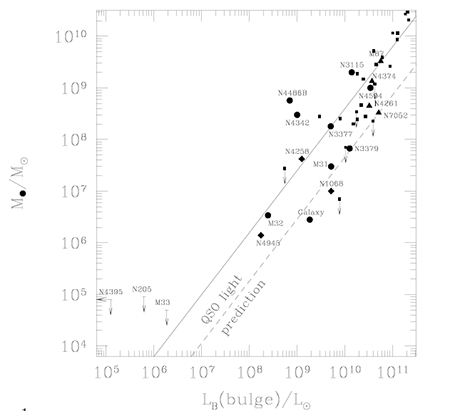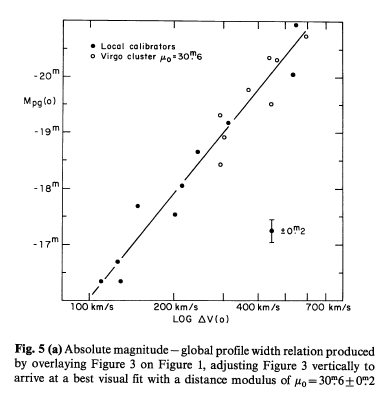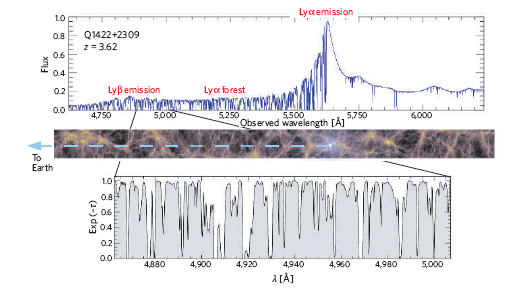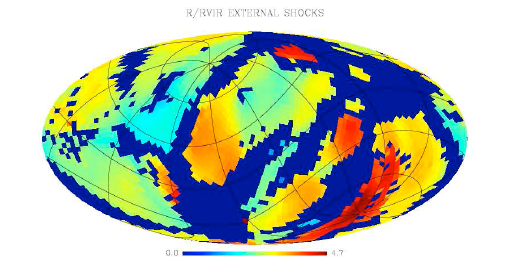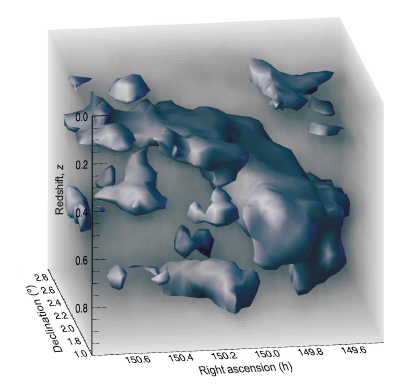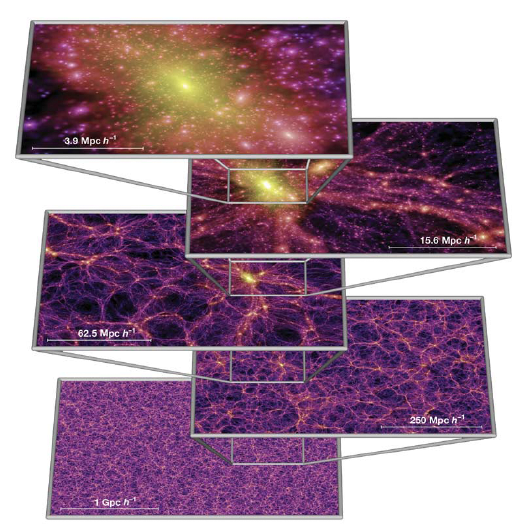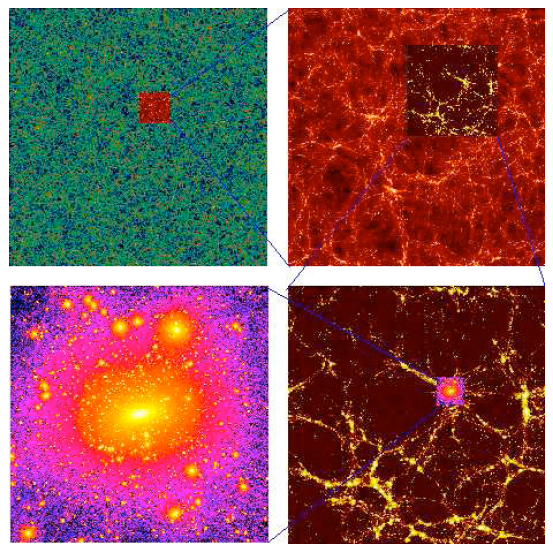Astronomy 61:
Current Problems in Astronomy and Astrophysics
Spring 2009
Prof. David Cohen
Archive of weekly papers
|
Week 14: Hopkins & Elvis 2009, "Quasar Feedback: More Bang for Your Buck," submitted to MNRAS, arXiv:0904.0649. Zach wrote the summary.
Week 13: Richstone,..., Faber, et al. 1998, "Supermassive black holes and the evolution of galaxies," in Nature, 395, 14. Andrew wrote the summary.
Week 12: Tully & Fisher 1977, "A new method of determining distances to galaxies," in Astrophysical Journal, 54, 661. Josh wrote the summary.
Week 11: di Matteo, Springel, & Hernquist 2005, "Energy input from quasars regulates the growth and activity of black holes and their host galaxies," in Nature, 433, 7026. Look at the supplemental material, too. There's a great movie. James wrote the summary.
Week 10: Springel, Frenk, & White 2006, "The large-scale structure of the Universe," in Nature, 440, 1137. Elizabeth wrote the summary.
Week 9: We had no class this week.
Week 8: Dodelson & Liguori 2006, "Can Cosmic Structure Form Without Dark Matter?," in Physical Review Letters, 97, 231301. Emma wrote the summary.
Week 7: Molnar et al. 2009, "Accretion Shocks in Clusters of Galaxies and their SZ Signature from Cosmological Simulations," in The Astrophysical Journal, in press. Zach wrote the summary.
Week 6: Massey et al. 2007, "Dark matter maps reveal cosmic scaffolding," in Nature, 455, 286. Note: There is supplementary information for this paper, too. I'd recommend you click through the electronic journal article link to the Nature website. Download the pdf of the article, and then click on the supplementary info link and get the pdf file of the supplementary article. Andrew wrote the summary.
Week 5: Springel et al. 2005, "Simulations of the formation, evolution and clustering of galaxies and quasars," in Nature, 435, 7042, 629. Note: There is the paper itself plus a supplementary paper (as well as a movie of the millennium simulation). I'd recommend you click through the electronic journal article link to the Nature website. Download the pdf of the article, and then click on the supplementary info link and get the pdf file of the supplementary article and the movie. Note also: We will be reading only the beginning of the main article, up until the "methods" section (p. 634) and only the end of the supplementary article (starting at the "physical model for galaxy formation" section on p. 9). Josh wrote the summary.
Week 4: Baugh 2006, "A primer on hierarchical galaxy formation: the semi-analytical approach," in Reports on Progress in Physics, 36, 12, 3101. Note: We will be reading only the first two sections this week (up through p. 21). Erin wrote the summary.
Week 3: Frenk 2002, "Simulating the Formation of Cosmic Structure," in New science from high-performance computing, Royal Soc. of London Phil. Trans. A, 360, 1795, 1277. James wrote the summary.
Week 2: Postman, 1999, "Clusters as Tracers of Large-Scale Structure," proceedings of Evolution of Large Scale Structure: From Recombination to Garching, p. 250, edited by A. J. Banday, R. K. Sheth, L. N. da Costa. Garching, Germany, held August 1998. Elizabeth wrote the summary. For general background on the structure of the universe, you should also have a look at Gott, et al. 2005, "A Map of the Universe". Read the first section, skim the second. And look at the figures and read their captions.
Week 1: We discussed some basic information about cosmology and large scale structure, and decided to look over some broadly relevant papers, some online resources, and the papers brought in by the students, and decide what to read for next week by this Friday.
And here are the papers suggested by students, so far:
|
Back to the main class page.
Comments or suggestions to David Cohen.
Last modified: April 29, 2009

